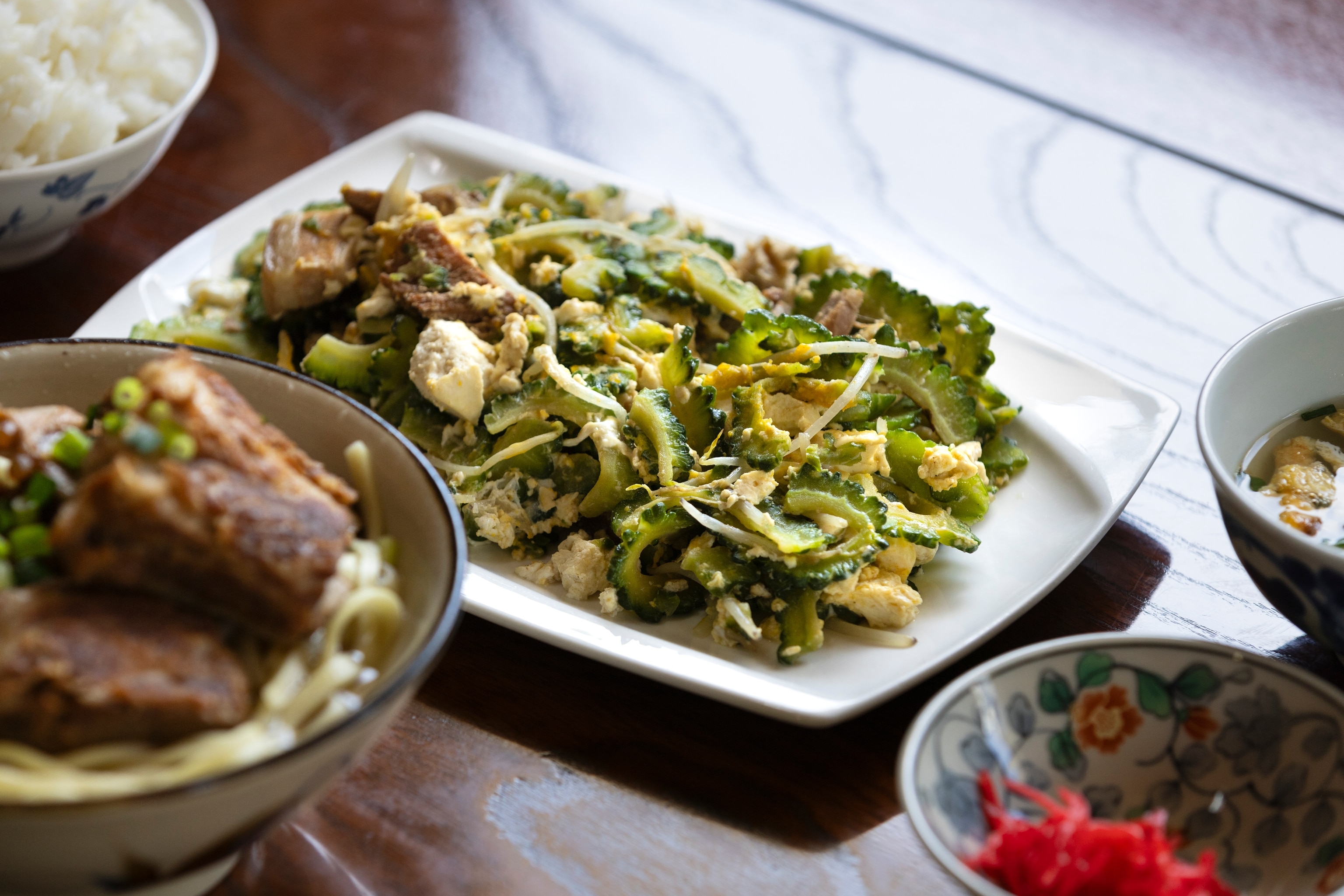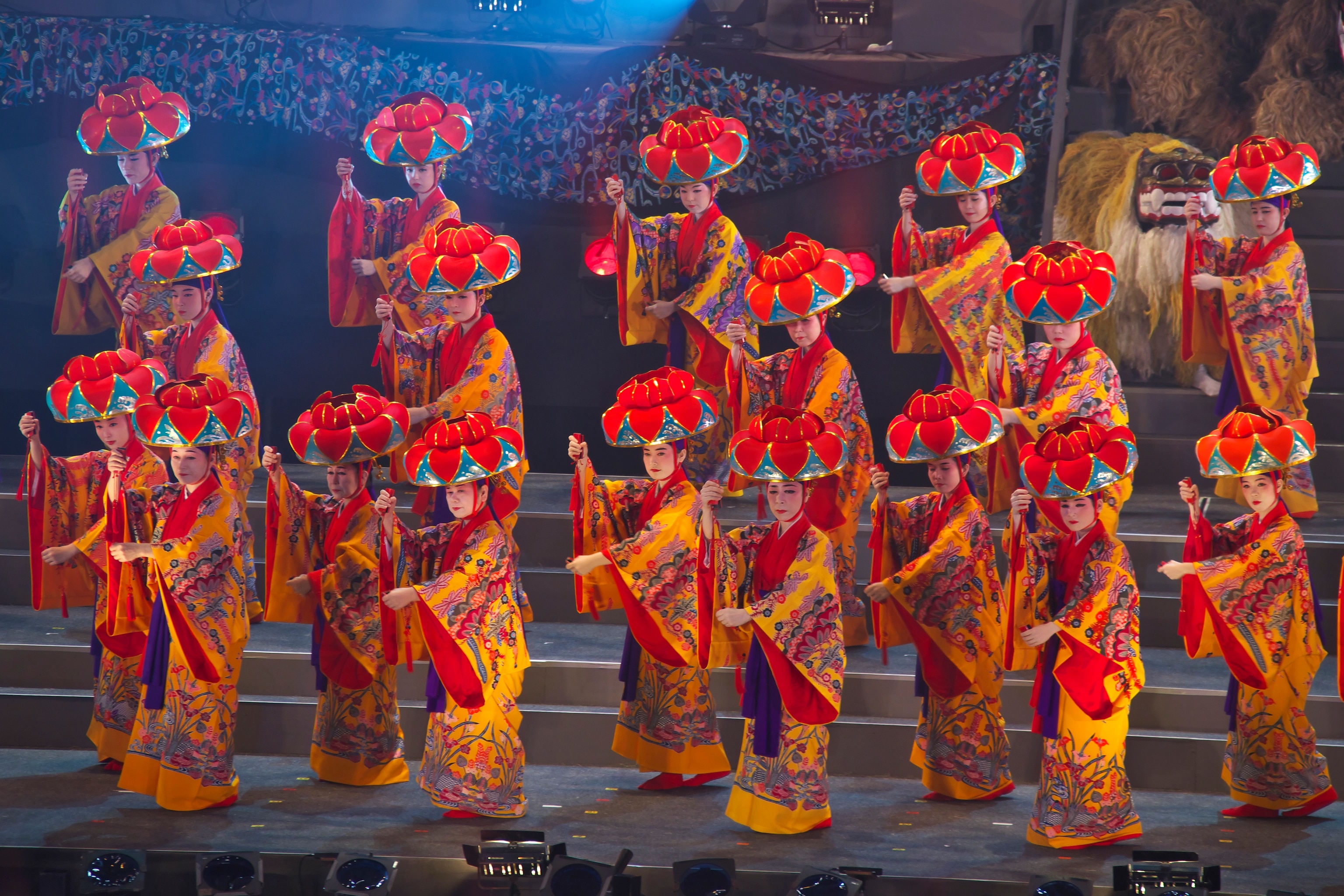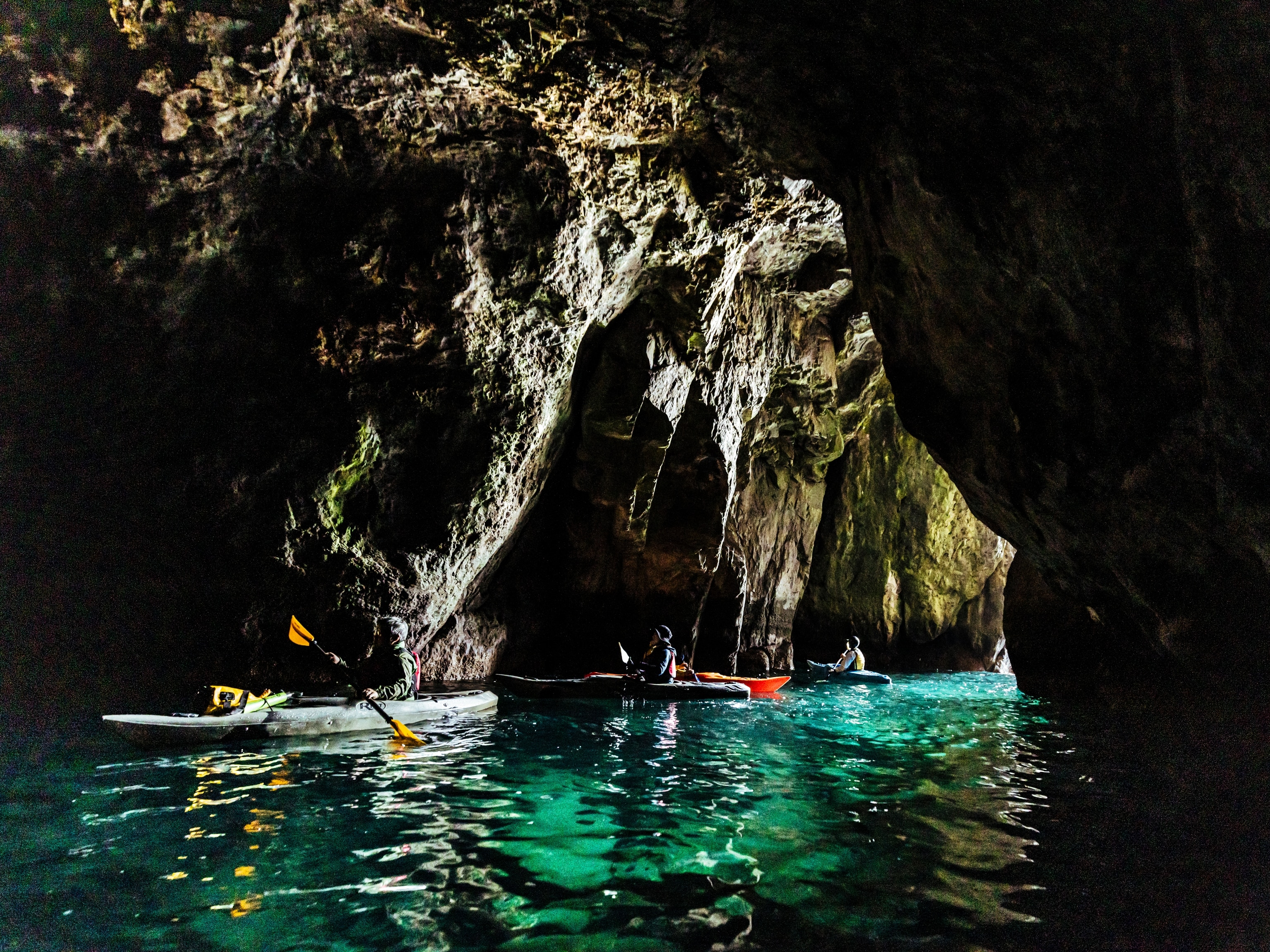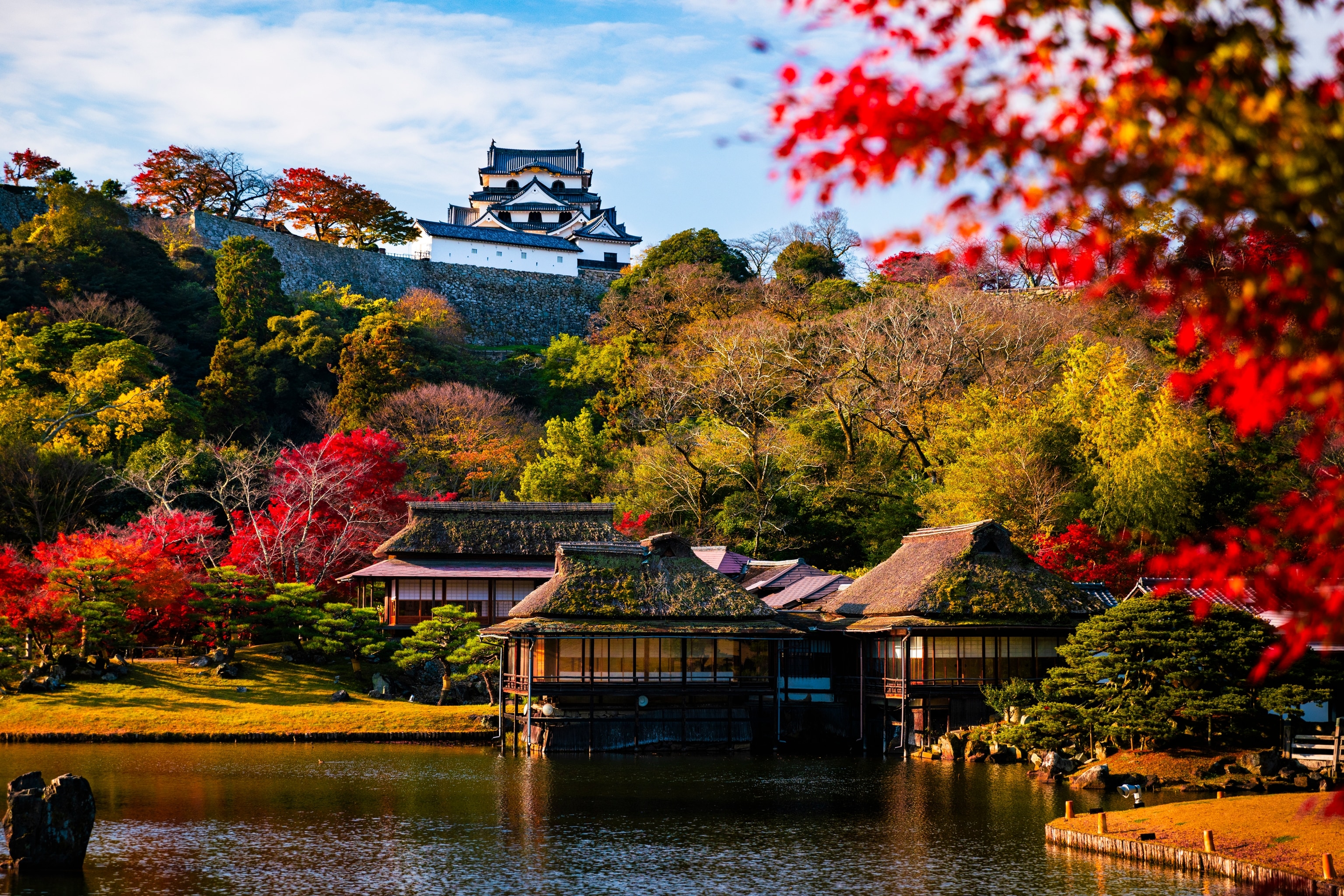
A tale of three castles
Leave the tourist trail behind for a journey into Japan's past.
The UNESCO World Heritage sites of the former capital Kyoto give unforgettable insights into Japanese history, but across Japan are numerous, less heralded (and less visited) destinations that can transport travelers back in time. Be it the tales unearthed in castle ruins or fortresses that have withstood the tests of time, a journey to Japan's Kansai region and the islands of Okinawa can offer travelers fresh insights into Japan's past and the moments that shaped its future.
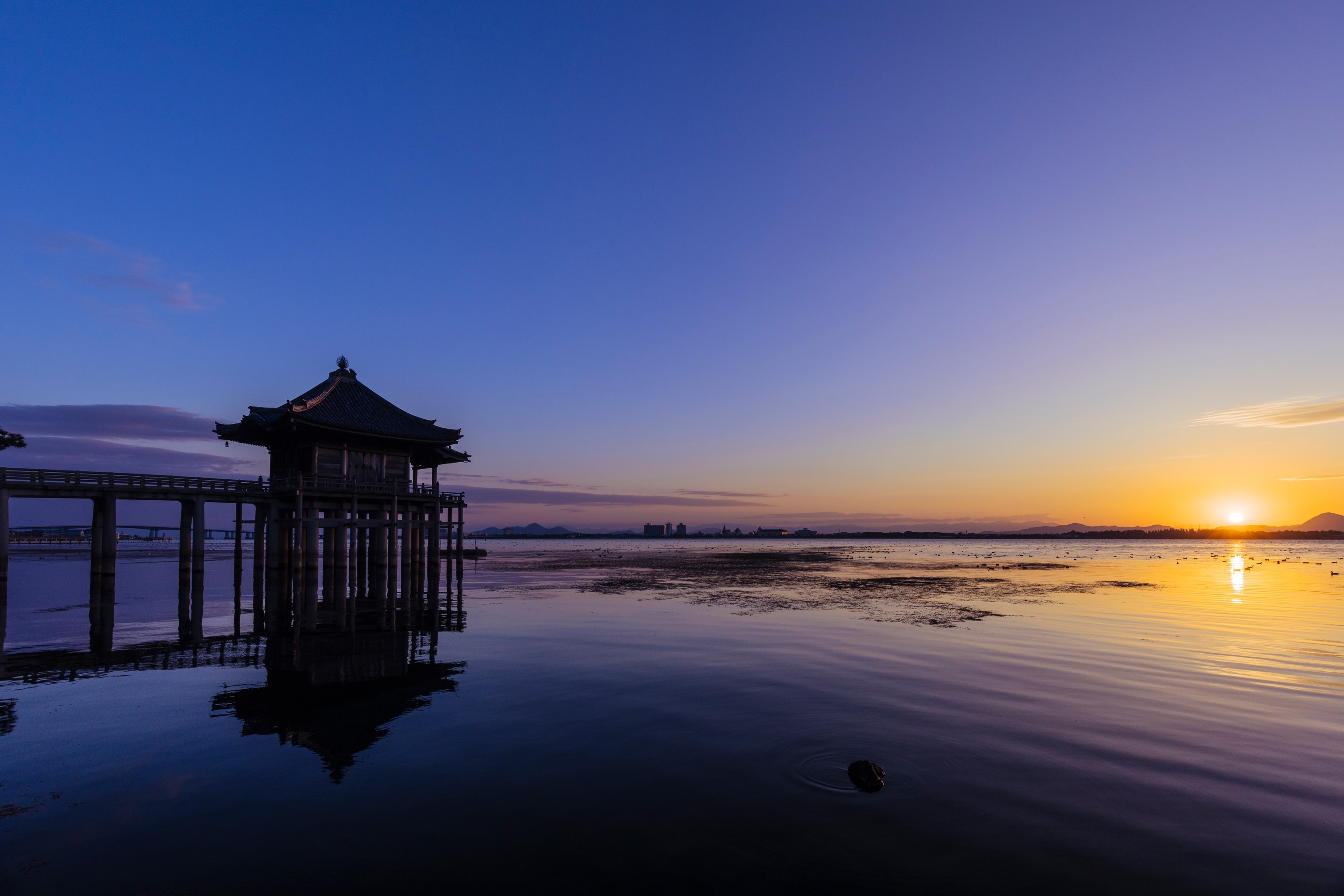
From war to peace in the Kansai Region
Between 1467 and 1567, Japan was in a state of civil war. While travelers to Japan will likely hear about Tokugawa Ieyasu, the man who would unite Japan and lead the country toward centuries of peace, there are plenty of other tales about the Sengoku-Jidai, or warring states period. Take the demise of the Asakura Clan in what's now Fukui (then Echizen), situated immediately north of Kyoto on the Sea of Japan coast. A powerful regional force, the Asakura ruled Echizen province throughout the warring states period, cementing power with the creation of Ichijodani Castle and overseeing such economic and cultural growth that their region became known as the "little Kyoto of Hokuriku" for its wealth and traditional refinement.
Then, like so many clans on Japan's bloody path to unification, it all came tumbling down. After defeat to a rival faction, their castle was destroyed and traces of the Asakura's rule gradually faded. Though not entirely. Ongoing excavations since the 1960s have unearthed the ruins of Ichijodani, giving a tantalizing glimpse of how the stronghold here would have dominated the landscape. So, too, the remains of landscaped gardens and the 2,000-plus Important Cultural Properties found on the 687-acre (278-ha) site highlight the fine arts and crafts produced under Asakura patronage. Added to that is a collection of reconstructed walls and buildings from the town that once flourished around the castle, opening a window to what life was like for the samurai and merchants of the day. That's something travelers can easily see for themselves, as the ruins are now open to the public and only a 15-minute train ride from the regional hub, Fukui Station.
Not all castles, however, shared Ichijodani's fate. Jump forward a generation and the beautifully preserved Hikone Castle in Shiga tells the story of Japan at peace, and a 200-year-plus period where samurai transitioned from pure warriors to administrators and business leaders. Completed in 1622 after a near-20-year construction project, Hikone Castle in its heyday was a symbol of Edo-era (1603-1867) peace and prosperity. Ever since, it has remained a focal point of local culture and pride.
Today, Hikone Castle is one of Japan's great remaining original fortresses, with a three-story, white-walled keep designated as a National Treasure of Japan, a rare accolade only awarded to four other castles. Its variety of architectural styles and accompanying collection of outer turrets, stone walls, and landscape gardens combine to give visitors a sense of what the castle town of Hikone was like in its Edo-era pomp. While that's impressive enough, stop by the museum at the foot of the castle's hilltop perch and you'll also see meticulous reconstructions of the former palace buildings, including tatami mat rooms and a traditional garden. Add the cherry blossoms that bloom around the castle in early April and it's one of the Kansai region's must-sees.

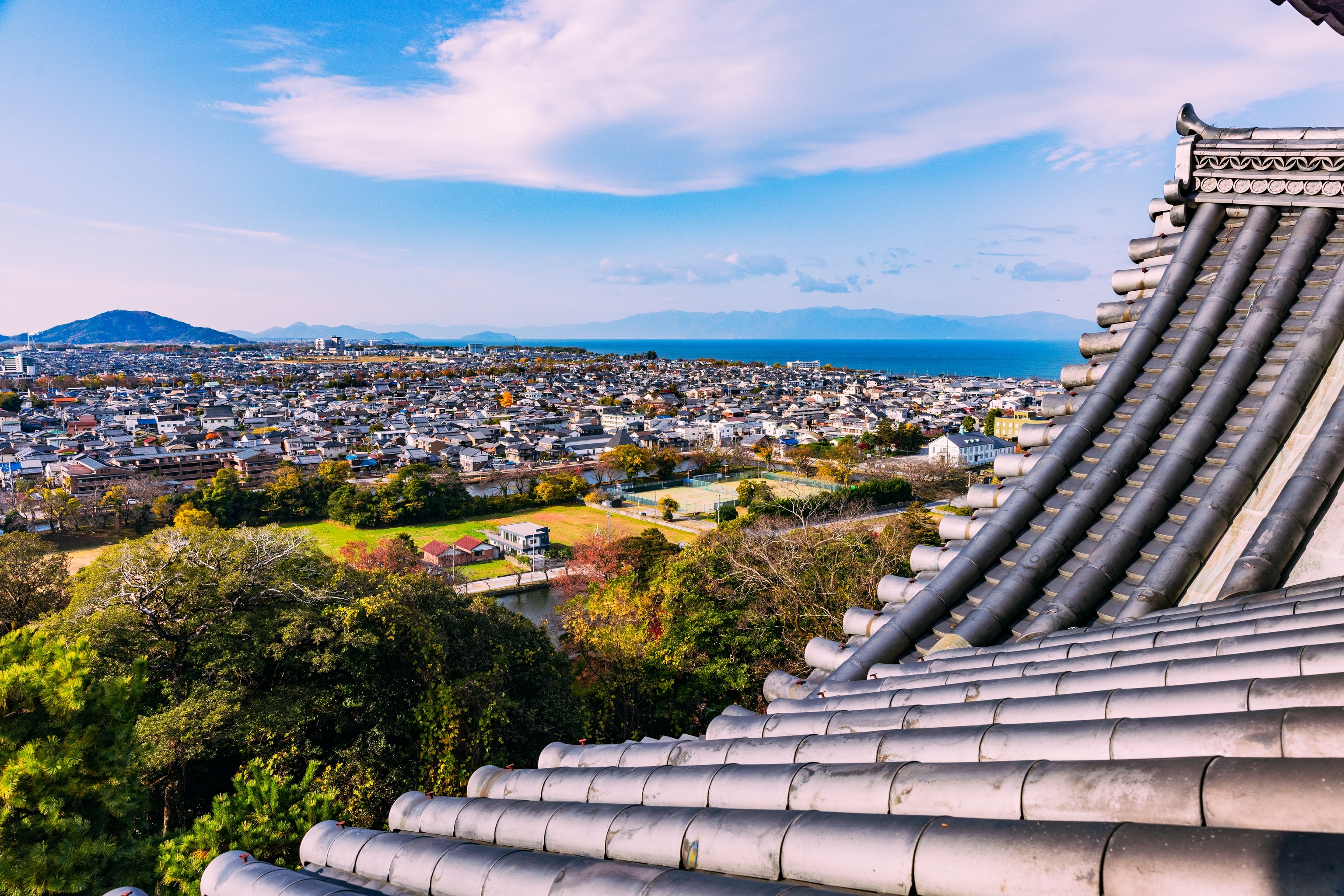
The remnants of the Ryukyu Kingdom
Though long in the past, there is a familiarity today with the heritage of the warring states period and subsequent Edo era—the world of samurai, geisha, temples, and shrines represents a classic form of Japanese history in the modern consciousness. The sun-kissed islands of Okinawa, however, provide a vastly different cultural heritage.
For close to 450 years, what's now Okinawa was the independent Ryukyu Kingdom, and for a time a tributary state of Ming Dynasty China until being formally annexed by Japan as Okinawa in 1879. Over the centuries, its political ties and prominent position on trade routes meant Ryukyu absorbed Chinese, Japanese, and even European influences. American administration from the end of World War Two to 1972 also left a cultural mark.
And though many travelers come to Okinawa for beaches and sunshine, traditional culture at sites like Shurijo Castle is another major draw. Originally built in the 15th and 16th centuries, and now painstakingly reconstructed, Shurijo's vivid vermilion buildings are a striking mix of Japanese and Chinese architectural styles that you won't find anywhere else in Japan. Likewise, the annual events that take place on castle grounds also have a distinctly Ryukuan air, with colorful period costume parades, traditional Ryukyuan dances, and performances of the banjo-like sanshin—a three-stringed Okinawan instrument with a captivating twang that has been played on the islands since the 1600s.
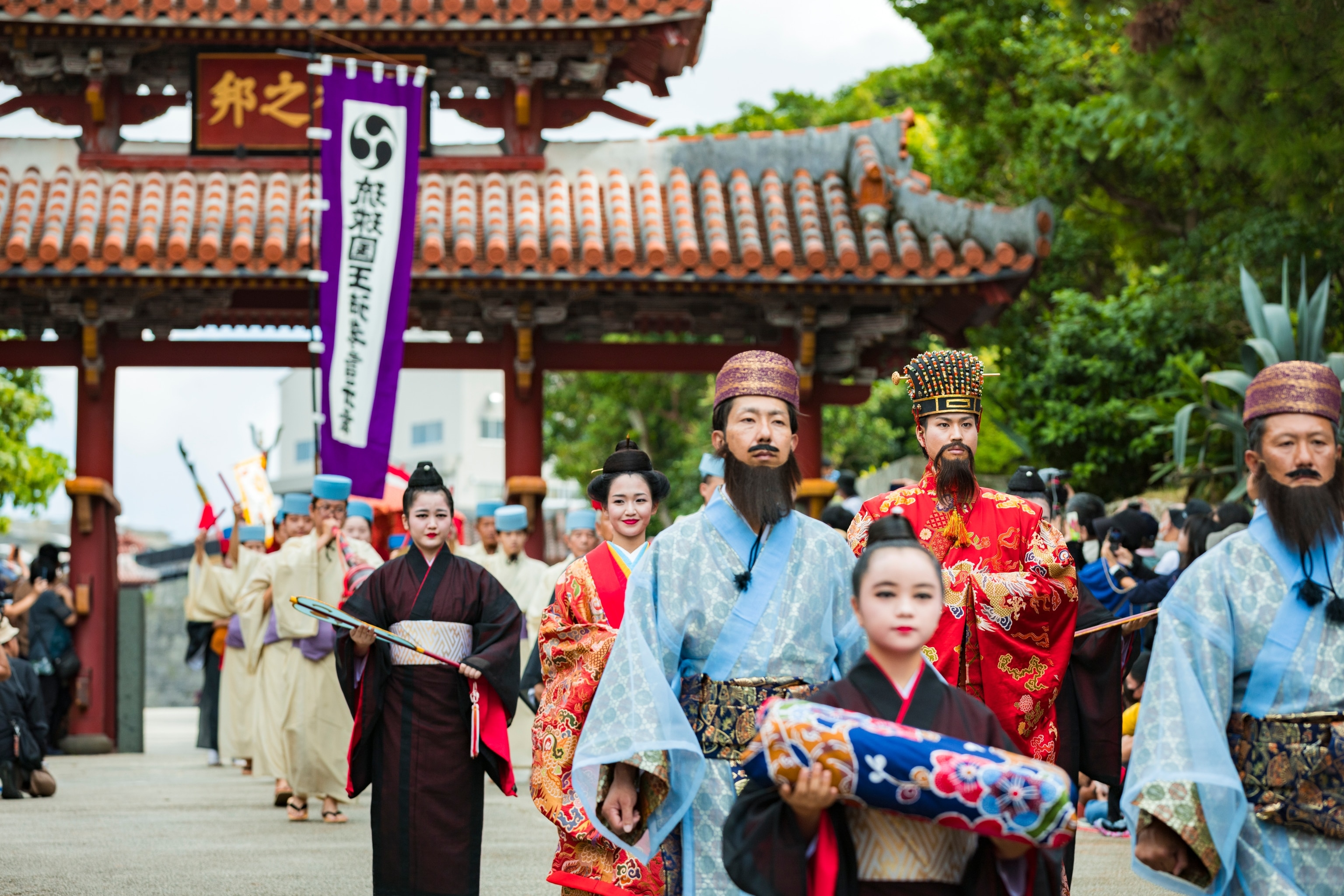
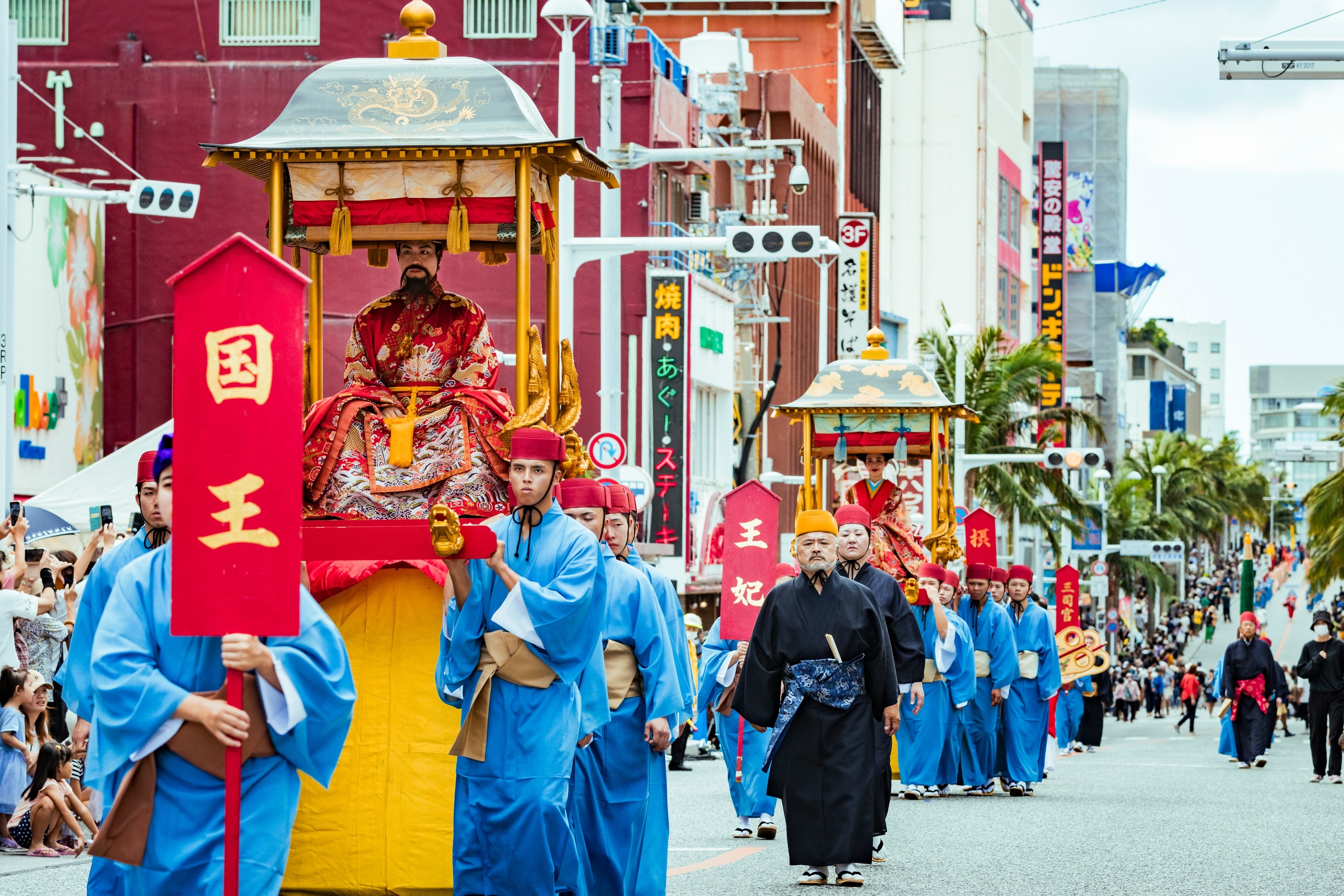
Beyond the castle, you can experience Ryukyu folk performances, such as the sanshin and traditional minyo folk songs, year-round at places like Hateruma, which serves up dinner shows along with traditional Okinawan food and drink. Like the sanshin, minyo have deep roots in Ryukyuan culture, having traditionally been sung as entertainment, for spiritual purposes, or even while working—sometimes a cappella, sometimes accompanied by the sanshin or dance.
As for the food, Okinawa has long done that differently, too, thanks to influences from Ryukyu's historic relations with China, Japan and other parts of Asia, and more recently America—the latter of which has seen taco rice and pork and eggs established on Okinawan menus. Dishes like goya champuru (bitter gourd stir fried with pork and tofu) and the firebrand local Awamori spirit are local classics that might not initially sound super healthy, but with traditional staples such as tofu, seafood, and purple sweet potato, Okinawa's nutrient-rich food culture is a major reason islanders here are among the longest living people on the planet.
